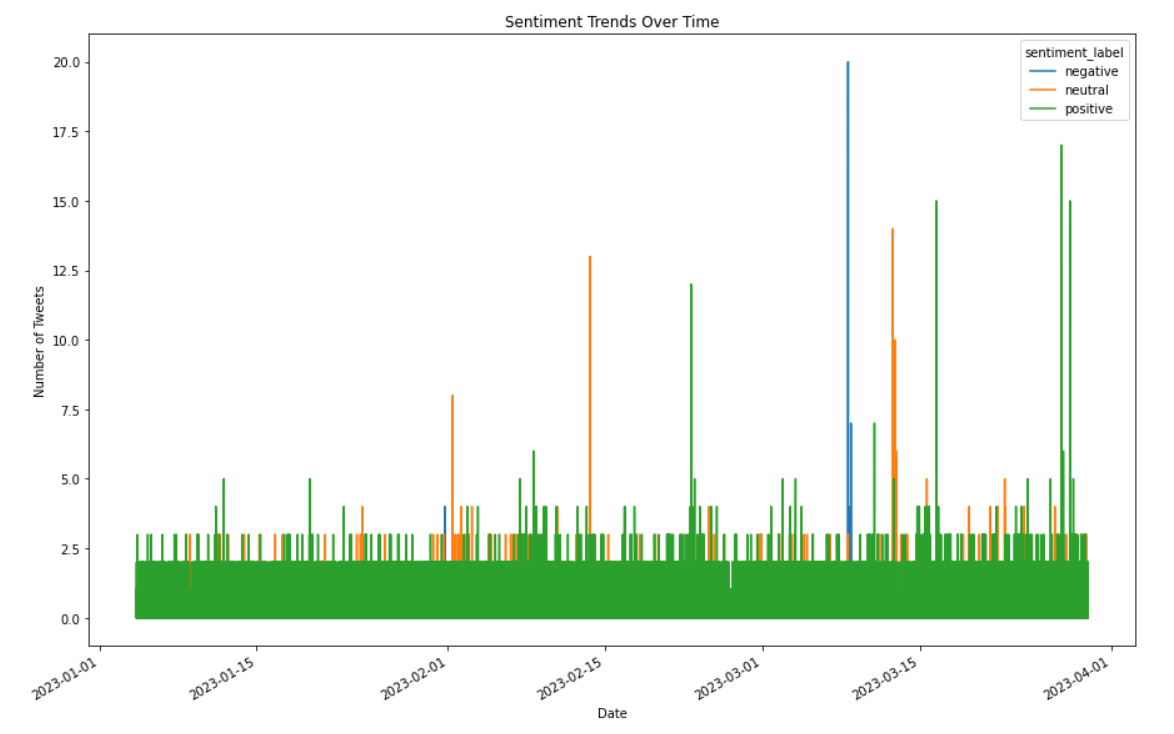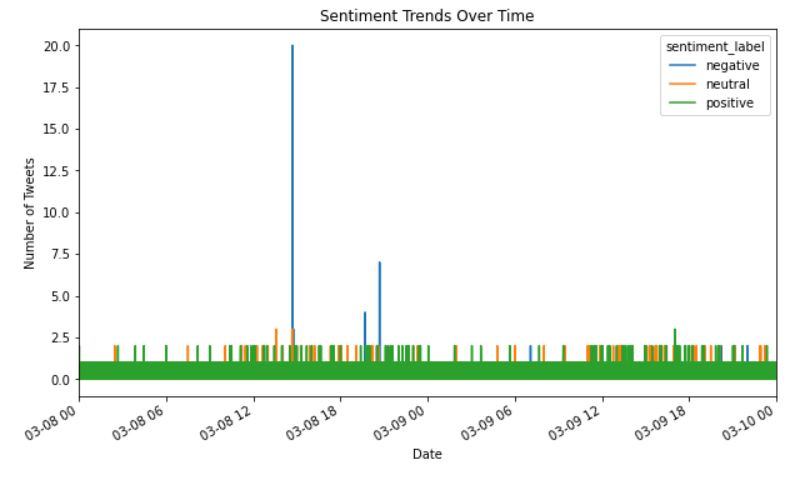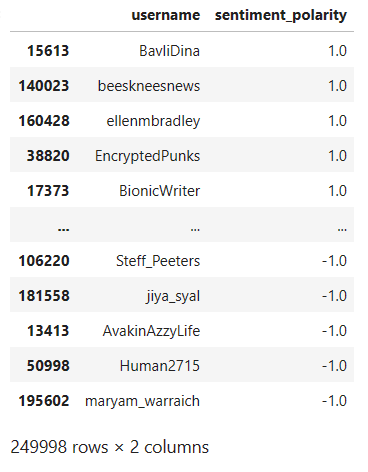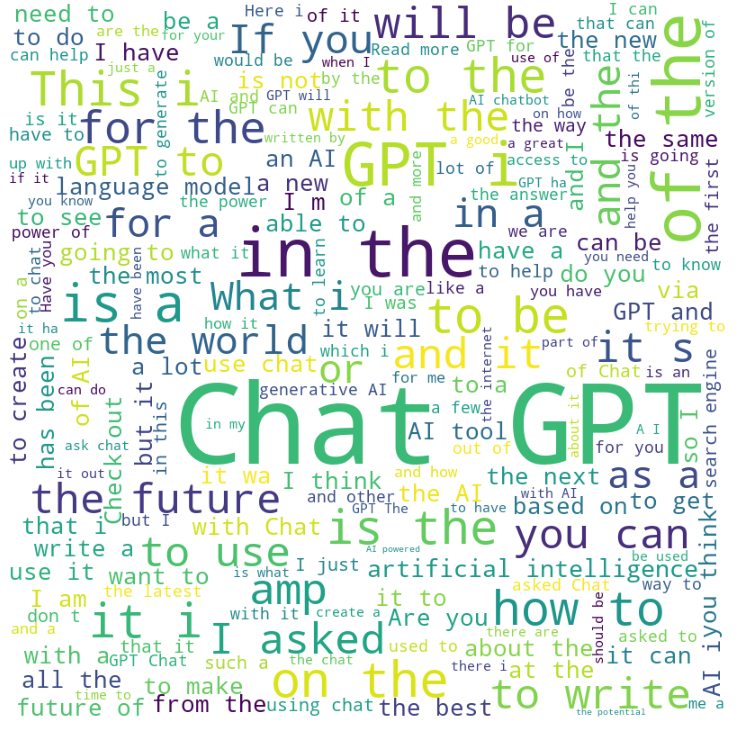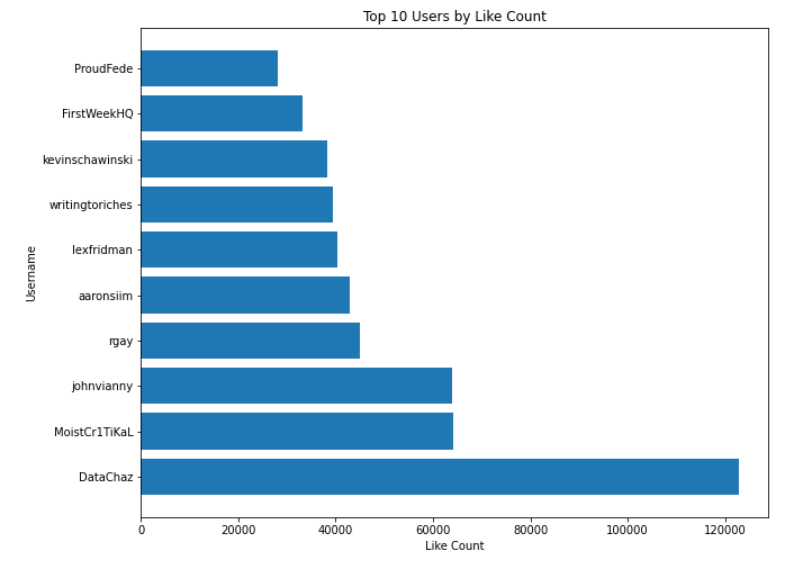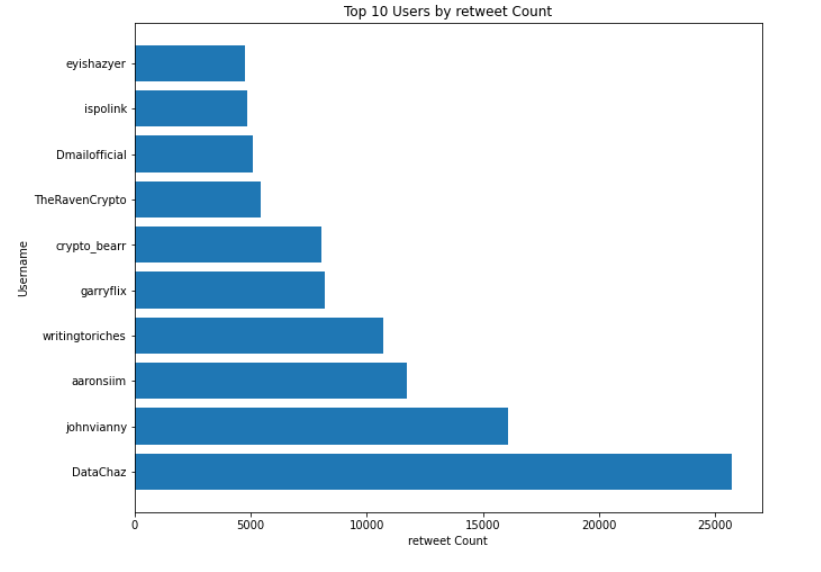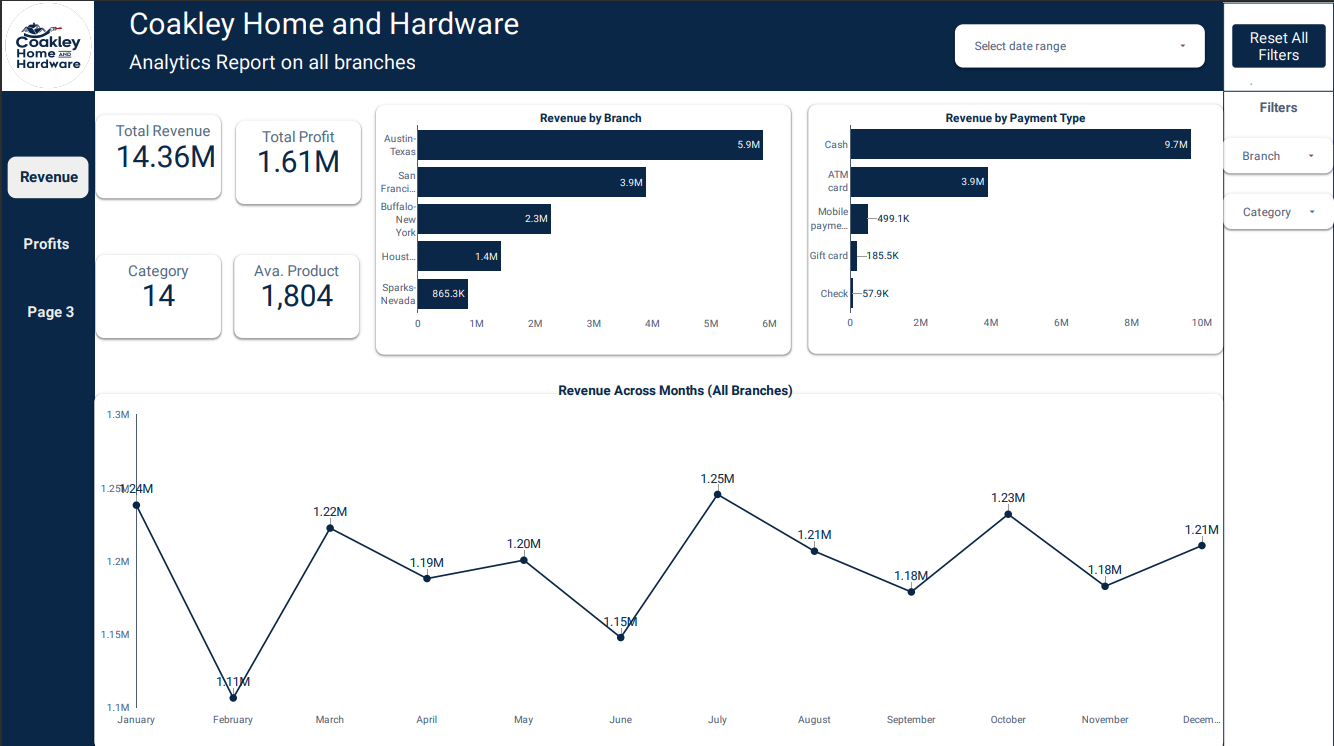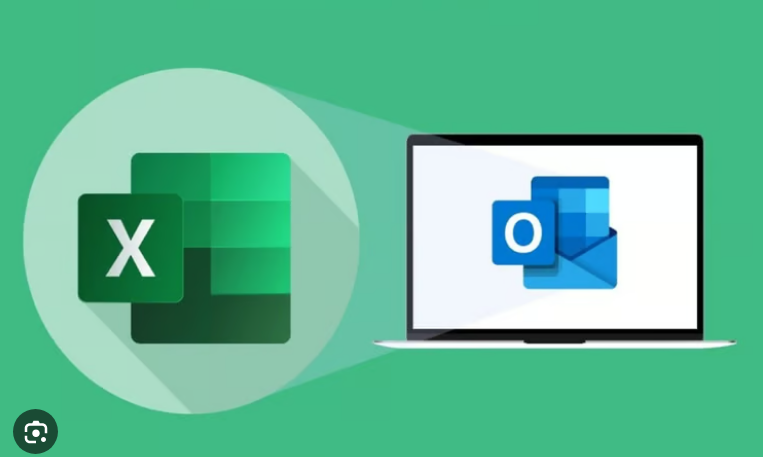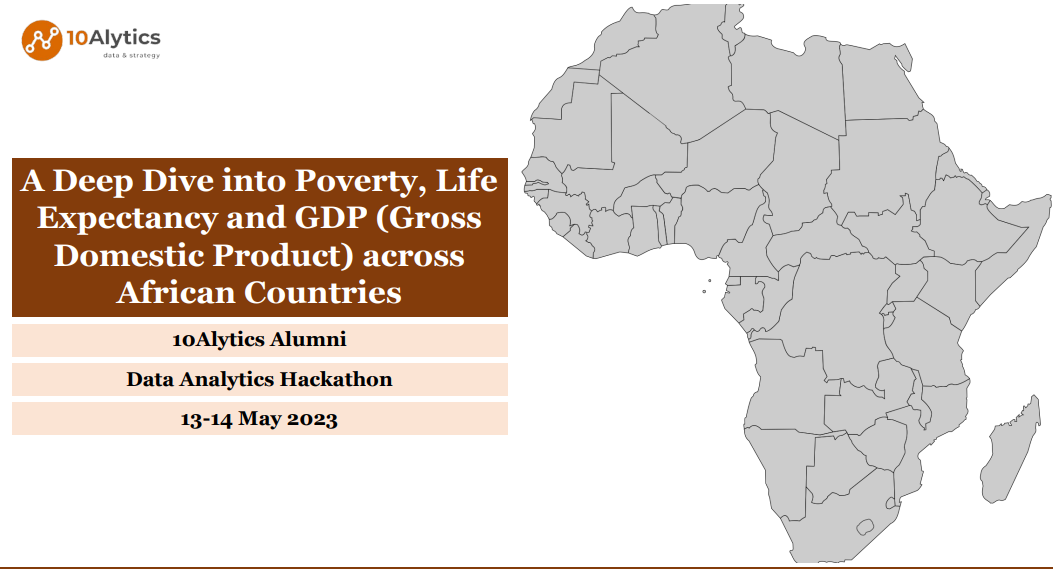NLP ANALYSIS OF TWITTER GPT TWEETS
Introduction
In this analysis, we aimed to gain valuable insights from a dataset containing 500,000 rows of Twitter data related to GPT and AI-powered conversational technologies. The goal was to understand public opinion, trends, and potential applications of ChatGPT by analyzing tweet volume, sentiment, user engagement, and the influence of key AI events. By examining various aspects such as sentiment analysis, sentiment trends over time, sentiment by user, word cloud analysis, hashtag analysis, influencer analysis, we were able to extract meaningful information. This analysis provided valuable insights for companies, researchers, and policymakers, enabling them to make informed decisions and shape the future of AI-powered conversational technologies.
1) Sentiment Analysis
- 1.1: Understanding the general public opinion towards GPT and AI-powered conversational technologies.
- 1.2: Examining Sentiment trends over time
- 1.3: Examining Sentiment by user
- 1.4: WordCloud Analysis
1.1: Overall sentiment Analysis
By consolidating the sentiment expressed in all the tweets, we were able to obtain a comprehensive overview of the overall sentiment and its corresponding percentage.
Insights
Based on the sentiment analysis of the 500,000 tweets about GPT, the majority of tweets (48.82%) expressed a positive sentiment, followed by neutral tweets (37.18%), and a smaller proportion of negative tweets (13.99%). This suggests that overall, the public perception of GPT is largely positive, which is encouraging for companies and researchers developing and using AI-powered conversational technologies. However, it is important to note that this sentiment analysis only captures a snapshot of public opinion at a given time and may not be representative of the entire population
1.2: To examine Sentiment trends over time
By visualizing the total individual sentiment of tweets for each day, we can observe the progression of sentiments over time. Plotting this data on a chart allows us to track the fluctuations and trends in sentiment on a daily basis.
It looked like there was a spike in negative tweets about AI and GPT between March 8 and March 10, we zoomed in to see if we can connect this to an event or occurrence.
We then brought up tweets from March 8 from 1pm which has a negative sentiment
Insights
Based on the filtered data, it appears that on March 8th, there was an increase in negative sentiment tweets about GPT during the time period from 1:00 PM to 11:59 PM. This may suggest that a particular event or news related to GPT occurred during this time period that led to a spike in negative sentiment among Twitter users. Although, insufficient data was not available to determine why this happened.
1.3: To examine Sentiment by user
we grouped the data by each tweeter and calculated the average sentiment score for each user, to allow us identify which users are most positive or negative towards GPT and AI
Insights
From the analysis of sentiment by tweeters, we can identify tweeters who have an overall positive or negative sentiment towards GPT and AI. For example, we can see which users have a polarity score of +1, indicating an extremely positive sentiment towards GPT and AI. These users may be potential brand ambassadors for GPT and AI, and their positive sentiment may influence others to have a favorable view of GPT and AI. On the other hand, we can also identify users with an extremely negative sentiment towards GPT and AI, with a polarity score of -1. These users may be potential detractors, and their negative sentiment may influence others to have an unfavorable view of GPT and AI.
1.4: WordCloud Analysis
We processed the "tweet text" by removing irrelevant elements such as URLs, mentions, and hashtags. Additionally, we eliminated common stop words to focus on the most meaningful words. With the cleaned text, we generated a word cloud representation where the size of each word is determined by its frequency of occurrence in the dataset.
2) Hashtag Analysis
Goal: To identify the most frequently used hashtags in tweets related to GPT. This will help us understand the most popular topics and trends related to GPT on social media, and potentially use these hashtags to reach a wider audience.
Insights
The hashtag analysis revealed that people who tweeted about GPT also used related hashtags such as ChatGPT, AI, OpenAI, technology, and others. This indicated that GPT was a topic of interest among individuals and organizations involved in the broader field of artificial intelligence and related technologies. By utilizing these hashtags in their social media posts, businesses and organizations had the opportunity to reach a broader audience interested in these specific topics.
#
3) Influencer Analysis
Goal The goal of this analysis was to identify the Twitter users who were most influential in discussing GPT and engage with them to potentially increase the reach and visibility of businesses, brands, and companies. By computing metrics such as the number of retweets and likes, we were able to identify the most active and engaged users, allowing us to target them for strategic engagement strategies.
we examined the top tweeters with the highest likes and retweet engagements. By analyzing the number of likes and retweets received by each user
Insights
From our influencer analysis, we can see that there are several Twitter users who have a high number of likes and retweets on their tweets related to GPT. These influencers include DataChaz, johnvianny, and many others. By engaging with these influencers, businessess and organizations can potentially reach a wider audience and increase brand visibility. By retweet or mention their tweets, or offer them incentives such as discounts or free trials to further promote business brand.
#
Conclusions
After analyzing the data related to GPT and AI-powered conversational technologies on Twitter, we have gained valuable insights that can improve business strategies and brand visibility.
We started by performing sentiment analysis to understand the general public opinion towards GPT and AI. The analysis revealed that the majority of tweets expressed a positive sentiment towards GPT, with a positivity rate of 48.82%. We also observed a generally positive sentiment trend over time, with occasional fluctuations. Additionally, sentiment analysis by user helped identify individuals with positive and negative sentiments towards GPT and AI.
Furthermore, the WordCloud analysis of the tweets highlighted the most commonly used words, providing a visual representation of the popular topics and discussions surrounding GPT.
In terms of hashtags, our Hashtag Analysis identified the most frequently used hashtags in tweets related to GPT, such as #Chatbot, #AI, #MachineLearning, and #NLP. These hashtags can be leveraged to target a wider audience and tap into popular topics and trends.
The Influencer Analysis identified key users, including influencers like DataChaz and johnvianny, who have a significant impact on the dissemination and engagement of GPT-related tweets. Engaging with these influencers through retweets, mentions, or offering incentives can help businesses increase their brand visibility and reach a wider audience.
Overall, these analyses provide valuable insights into public sentiment, popular topics, and influential users related to GPT on social media. By leveraging these insights, businesses and organizations can enhance their social media strategies, improve engagement, and effectively connect with their target audience.
Full notebook and analysis can be found at https://github.com/Genbodmas/NLP-Analysis-of-Twitter-GPT-Tweets

